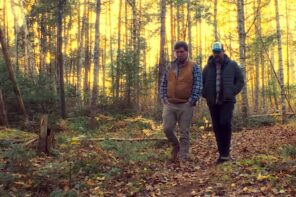I was excited to read Religion for Atheists—really I was. Here’s a confessed atheist, pop philosopher Alain de Botton, who nonetheless actually believes that religion is worth looking at, unlike his more militant friends in the New Atheist camp. De Botton lavishly praises the usefulness of religious traditions for dealing with the problems of what he calls “the modern soul.” Those problems basically amount to egotism: “When God is dead, human beings—much to their detriment—are at risk of taking psychological center stage… Religion is above all a symbol of what exceeds us and an education in the advantages of recognizing our paltriness.”
And he doesn’t just look to moral wisdom in religious texts; he appears to also appreciate the practices of religious rituals:
Religions… sit us down in unfamiliar spaces, adjust our posture, regulate what we eat, give us scripts detailing what we should say to one another… all this not in order to deny us freedom but to quell our anxieties and flex our moral capacities.
All well and good.
So what makes this book “for atheists”? In order to be useful, religious ideas must be “dislodged from the supernatural structure within which they were first conceived.” That’s where the trouble starts. De Botton proposes rebuilding all our major secular institutions—science, psychotherapy, corporations—in a religious guise.
Restaurants, which now keep us separated into our little tribes, discouraging community, should be transformed by the early Christian idea of the “love feast.” A photographic illustration of the “Agape Restaurant” shows diners in long, Last-Supper-like rows, staring into each others’ eyes over tiny glasses of what is possibly communion wine. Our universities should replace coursework on Moby-Dick with “Departments of Relationships,” which teach our modern souls how to be better at life.
Art museums can keep their art—it was all created for religious reasons anyway—but it should be rearranged to provoke an emotional, not intellectual, response. He wants people bursting into ecstatic tears at the Pieta. I’m not sure if these suggestions were meant as thought experiments or not, but given the photographic illustrations and the fact that de Botton is founder of something called “The School of Life,” I’m guessing he’s serious.
All these de-Botton-ized reimaginings do a disservice to religious practitioners, who may wonder why their religious ideas and practices can’t work for them too, within the history and traditions that gave birth to them. With this basic misconception, de Botton shows himself to share some of the egotism of the New Atheists: religious ideas have just been sitting there waiting to be cherry-picked for a new breed of higher, rational creature called the atheist.
That said, de Botton also has a large, European blind spot that will disappoint many American atheists. He does not attempt to explain a principal reason for distaste for organized religion: its all-too-real alliance with conservative politics. De Botton asks readers to look beyond theology to practical wisdom. That’s difficult to do when that theology, weaponized with politics, is already having practical consequences, like limiting access to abortion, or banning gay marriage.
So Religion for Atheists has something to dissatisfy everybody, based as it is on fundamental misunderstandings of both atheism and religion. I was reminded of an idiosyncratic rabbi I once met who told me that Judaism does not demand that you believe in God, but that you love God. His point was that literalistic belief in a “man upstairs”—those “supernatural structures” de Botton is so disgusted with—is not what drives many people of faith.
Often, it’s all those other aspects of faith, the ones de Botton is excising: history, tradition, family, love. Too bad he’s too infatuated with his own grand schemes to see what the rest of us already know.




